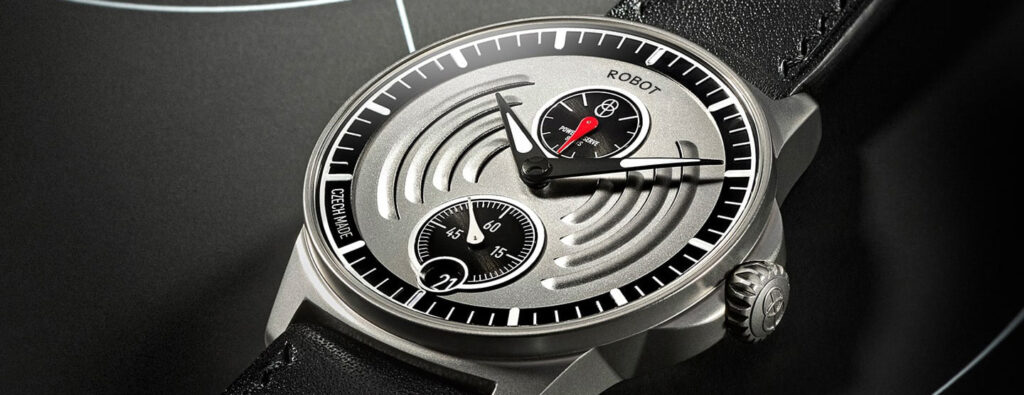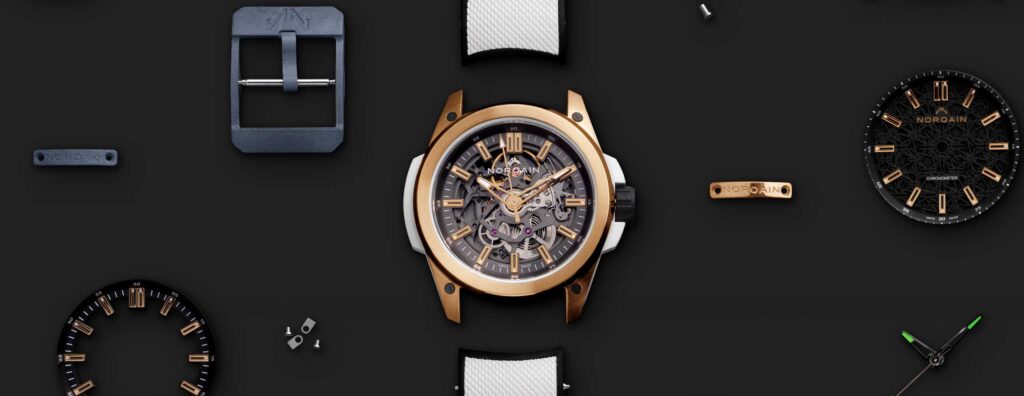Girard-Perregaux
The Girard-Perregaux Constant Escapement, Live From BaselWorld 2013
Girard-Perregaux
The Girard-Perregaux Constant Escapement, Live From BaselWorld 2013
“I am amazed, every day, at the invention of Nicolas Dehon. How he was inspired to come up with this idea still amazes me.” –Stéphane Oes, Director of R&D, Girard Perregaux
One of the biggest stories not only of BaselWorld 2013, but quite possibly of the last two centuries in watchmaking, is the debut of the Girard Perregaux Constant Escapement. As first described here by Jason Heaton, it’s nothing less than the first successfully series produced, true constant force escapement ever made.
What is a constant force escapement? There are several definitions, but the most exact is that it incorporates a detent spring which is re-armed at each oscillation of the balance, and which –and this is the key point –impulses the balance directly. The reason watchmakers have, since the very beginning, sought to provide an unvarying amount of torque to the oscillator –whether it’s a pendulum, balance wheel, or other device –is that mechanical oscillators tend to show variations in frequency depending on the amount of energy delivered. Devices as varied as the chain-and-fusée, stopworks (which prevent the last, weakest turn of the mainspring barrel from being used) and the remontoir d’egalité are all designed to ensure that the amount of energy reaching the oscillator remains constant.
The closest relative to the constant force escapement is the remontoire d’egalité, which is a mechanism that can be thought of as a kind of secondary maispring. Basically, the remontoire d’egalité is a spiral spring which delivers torque to one of the wheels in the going train (watchmaker-speak for the gears that carry power from the mainspring to the balance) and which is periodically re-wound by the mainspring. The remontoir d’egalité is very old –the spring version was invented by John Harrison for his H2 Marine Chronometer and was essential in the excellent performance of H4 as well –and quite rare, as it’s difficult and expensive to make and adjust. They have been used very seldom in wristwatches –the first to put a remontoire d’egalité in a wristwatch was F. P. Journe; more recently, A. Lange & Söhne used one in the Lange 31, and this year Christophe Claret in his Kantharos wristwatch –but the constant force escapement is probably the rarest bird in horology’s menagerie.
The examples of watchmakers who’ve made any attempt to use one can almost be counted on the fingers of one hand. Probably the most notable is Breguet, who made several clocks and watches with constant force escapements, but the enormous challenges involved in making and adjusting them put them out of reach of virtually all watchmakers before or since.
The Girard-Perregaux Constant Escapement watch is, to the best of our knowledge, the first example of a truly successful constant force escapement in a wristwatch and the first successful constant force escapement to be series produced in the history of watch and clockmaking. The brainchild of Nicolas Dehon, who first conceived of the idea while a watchmaker at Rolex, it uses an s-shaped blade spring that is re-armed once per oscillation to deliver energy to the balance. The blade spring is re-armed by two contra-rotating balance wheels –in this image, the locking faces of the two locking jewels on the arming lever can be seen “facing” up and down –in opposite directions –so as to engage the locking teeth of the escape wheels.
The energy of the mainspring is delivered to the escape wheels, and as each turns, the curved surfaces between the locking teeth –you can think of them as the “arming” faces of the escape wheels –bear against the locking jewels on the arming lever. As the escape wheel pushes against the locking jewel, it moves the arming lever, which is formed as a single piece with the blade-spring. The result is that the blade-spring is moved from a stable to a meta-stable configuration –one in which it requires a minimum amount of energy from the balance to unlock the spring so it “snaps” into a stable configuration again, and in doing so delivers energy to the balance.
We’ve shared this video before but it’s worth looking at one more time for its clear depiction of the action of the escapement.
It’s incredibly ingenious. Horology has very few genuine “firsts” but this is one of them, and for us, to actually have the Girard Perregaux Constant Escapement watch on the wrist after having followed its development from the beginning was one of the most truly exciting and moving moments of this or indeed any BaselWorld.
Congratulations to Mr. Nicolas Dehon, to Girard-Perregaux’s R&D head Stéphane Oes, and to Girard-Perregaux.














